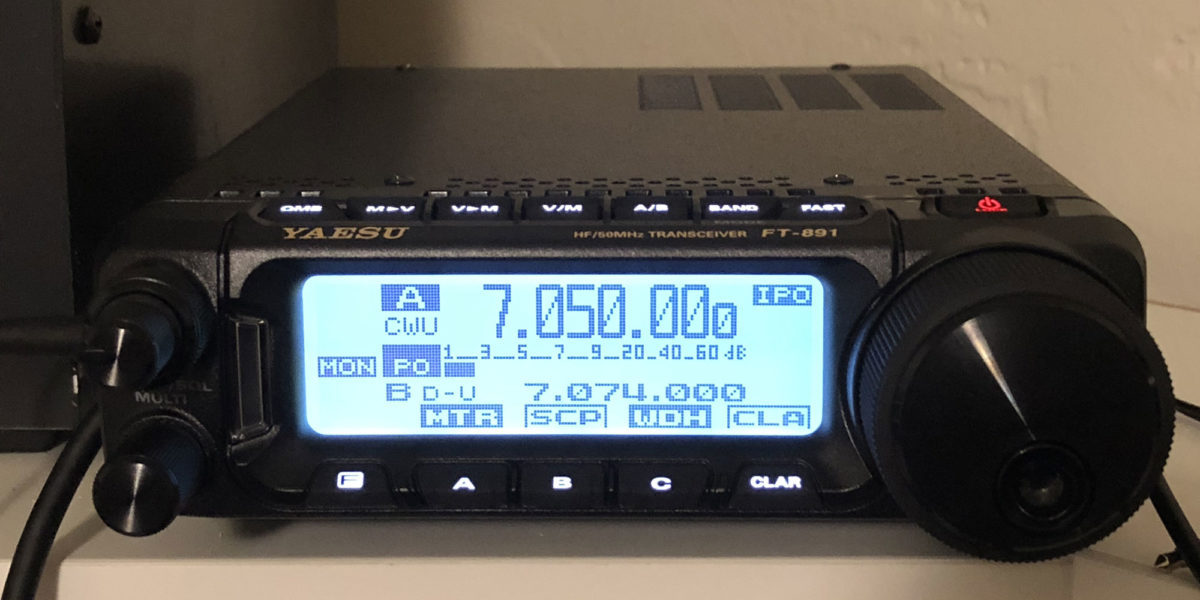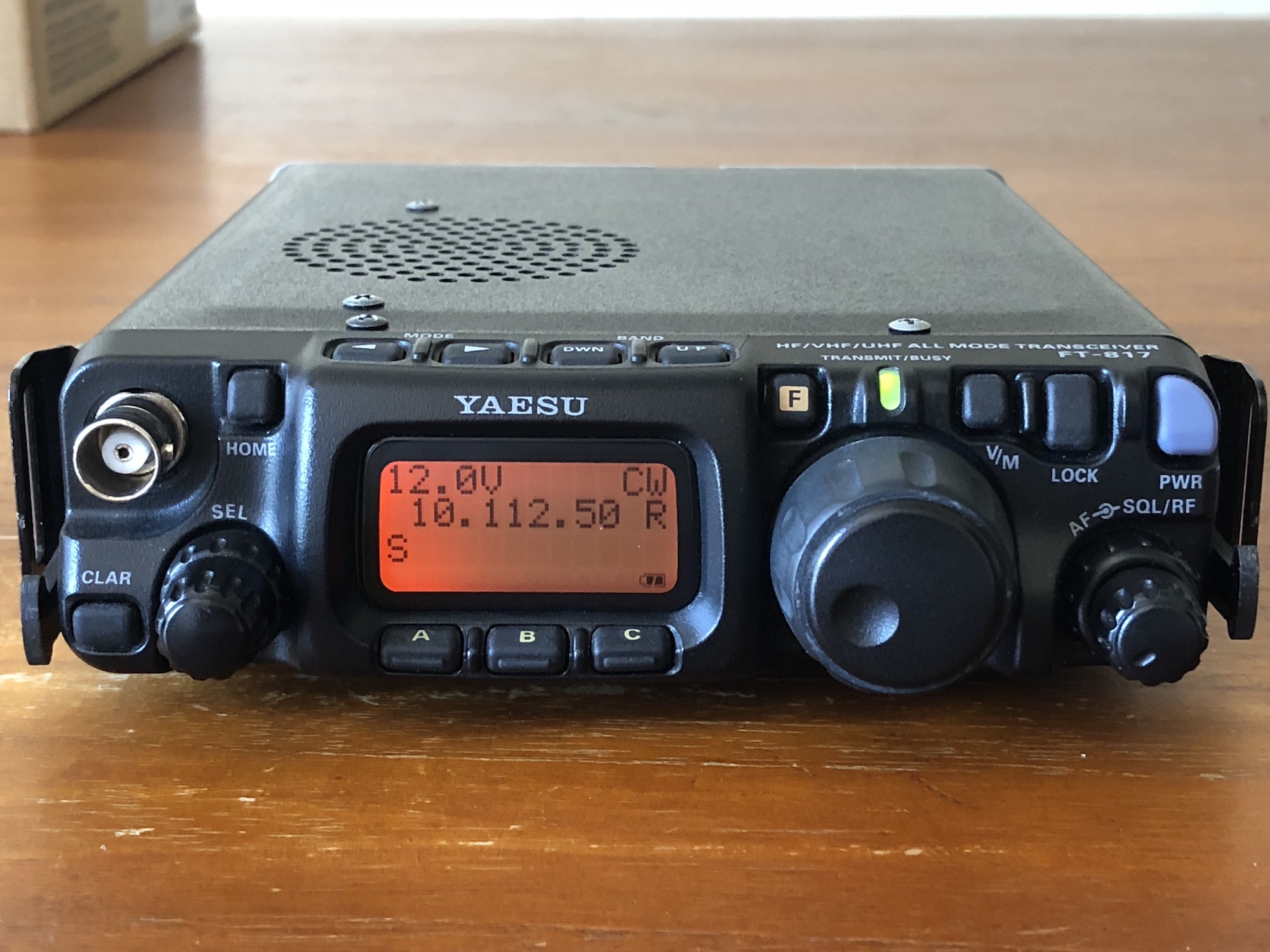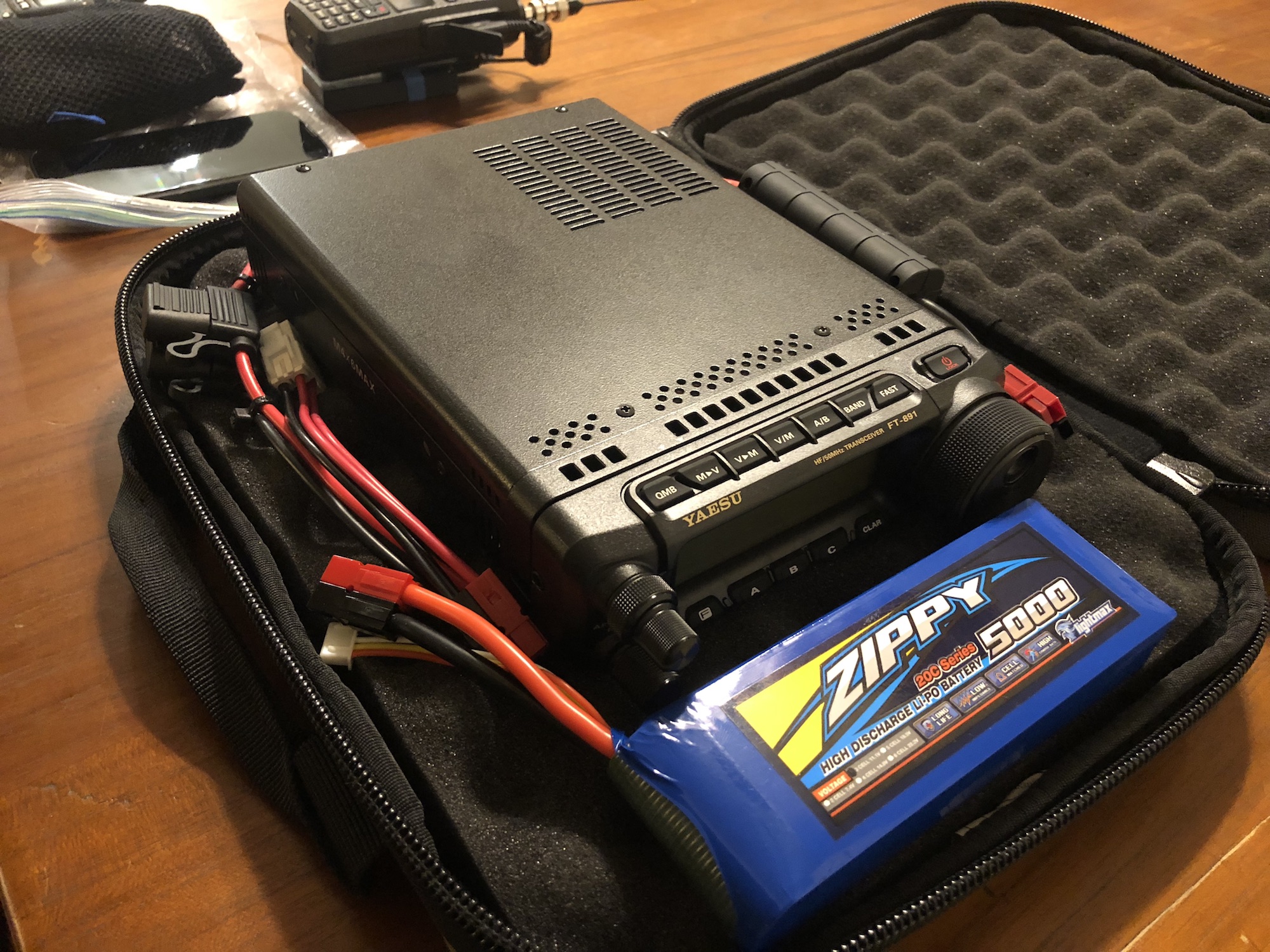It’s been a few weeks (or maybe more) now, but I’m catching up on my blog posts! I sold my trusty and beloved FT-817 so I could get a non-QRP rig! This isn’t about “life is too short for QRP.” I’m not a believer of that statement. I love the challenge and magic of QRP. I’ve been pretty much solely QRP for quite a while. Not because of a love of the challenge primarily, but because of the many other benefits. Nonetheless, I decided to get a 100-watt rig. But there’s more to it than just the power.
Why the Change?
For quite a while, I’ve entertained the idea of having 100 watts at home. It can be handy for getting through when 5 watts just doesn’t cut it. But beyond that, I wanted the better signal processing and filtering features available in more modern and/or feature-rich radios. I hadn’t given much thought to using more power in the field, since it just seemed impractical. Non-QRP rigs us more power just sitting there receiving than QRP rigs like my MTR-3B use when transmitting!
But I’d heard of other SOTA Activators using 100-watt rigs on some of their activations, and I’d seen a lot of stuff from Julian OH8STN about operating portable with 100-watt rigs (and QRP rigs).
A big thing I’ve longed for when using the FT-817 is better filtering. Operating CW can be a bit of a pain since I don’t have the optional narrow filters. So filtering and receiver performance were core driving factors for wanting to make a switch, in addition to occasionally wanting more power.
Since I have the MTR-3B for ultra-portable operations (and the QCX, for that matter), I no longer absolutely needed to have the FT-817. The last thing really stopping me was that I’d lose the VHF/UHF capability (unless I got an FT-857D). That, and I’d miss that beauty of a radio.
Finally, I decided to take the plunge. I put the FT-817 up for sale. As soon as I shipped it, I ordered the FT-891. A few days later, I had the FT-891.
I did lots of research on how I might power it in the field -it’s a very power-hungry rig. The best solution I’ve landed on so far is a 12Ah (or more) LiFePO4 battery. However, I don’t have the money for that yet. A SOTA friend of mine did a test to see how his FT-857D would run on a 3S LiPo battery and it pretty much worked, so I decided to get a 5Ah LiPo battery for now, due to the reduced cost and the fact that I already have a balance charger for those. I also got an MFJ 30-amp power supply with preinstalled Anderson Powerpole connectors for using this as my base station.
I got a molded semi-rigid pistol case to put the radio in, so it’s protected in its travels to far-off destinations with me.
What I think of the FT-891
I’m not going to do anything like an in-depth review on this thing. The summary is that I love it. Here are some highlights of my perceived pros/cons:
Pros:
- Compact size for a full 100-watt rig
- Very good receiver
- Good DSP features and filters for both phone modes and CW
- Nice big display (for a rig this small)
- Filters (did I already mention this?) – I really love having adjustable, good-sounding filters for CW!
- I like the way it looks
- LOTS of features (this also falls into cons)
- Front-panel custom-function keys
- Good digital interface options (no built-in soundcard, but otherwise good for digi modes)
Cons:
- In true Yaesu style, they’ve packed things into wayyyy too many menus. The interface is intuitive for some things, completely unintuitive for others.
- Core features hidden in Menu Mode. This is basically the same thing as my first point. To adjust power output, you have to go into Menu Mode and find the appropriate power output setting! There are a couple of other key things hidden in Menu Mode, but this one sticks out the most.
- No color choice on the display lighting (I prefer amber)
- Power consumption! I knew this going into it and it’s honestly not really a “con” since most other comparable rigs have similar power consumption. But it takes a bit of getting used to, going to nearly a full amp on receive, and up to 18-20 amps on transmit! It’s like going from e-bike levels of power consumption to driving a truck!
There are lots of other things I could praise, and other things I could pick on, but those are the key points. This rig is definitely a keeper for me. For the price, it’s hard to do better!



